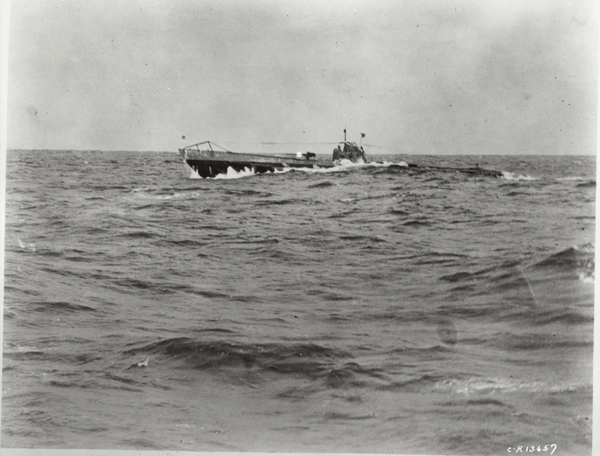German U-Boat at Sea
Prior to the 20th Century, the submarine's promise as a weapons system had been stymied by a lack of appropriate technological solutions to the problem posed by creating a true under water weapon. Nevertheless, experimenting during the 19th century, most notably during the American Civil War, regarding how to solve the key problems of powering, navigating with and fighting from an underwater craft led to important breakthroughs. In particular, American John Holland, born in Ireland he immigrated to America in 1873, led the way.
Holland had realized the same engine for use on the surface did not need to be used for underwater thrust. Therefore, Holland combined a gasoline-powered engine, later diesel, for surface propulsion and an electric motor for underwater use, charged by the surface engine. Basic submarines went through little alteration over the next half century. Holland's work meant that by the early 20th Century the submarine had become a far more effective underwater weapon. By the onset of the Second World War the submarine offered powerful asymmetric capabilities to nations seeking to challenge the world's most powerful military establishments.
Picture Courtesy US National Archives, local identifier no. 19-N-13657


